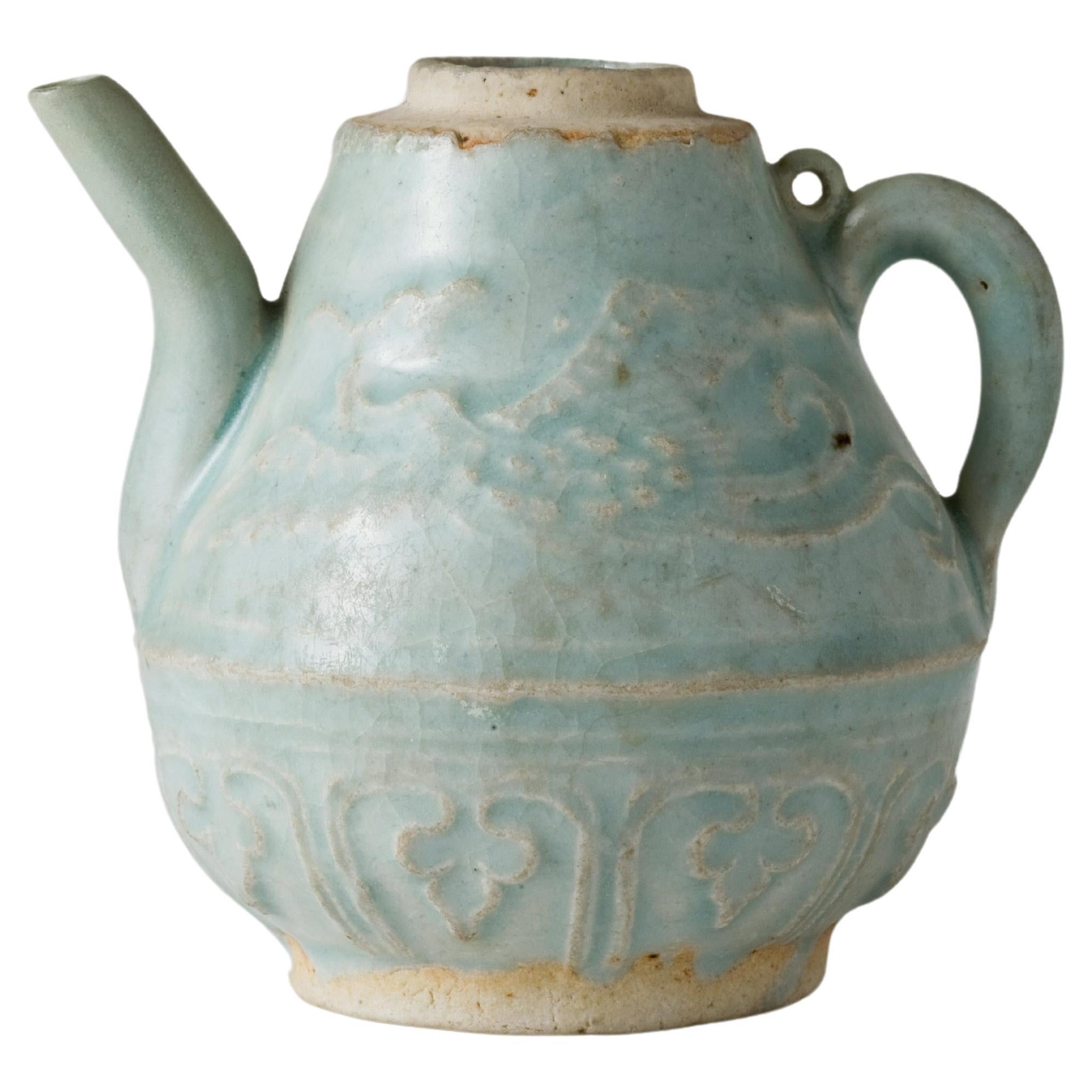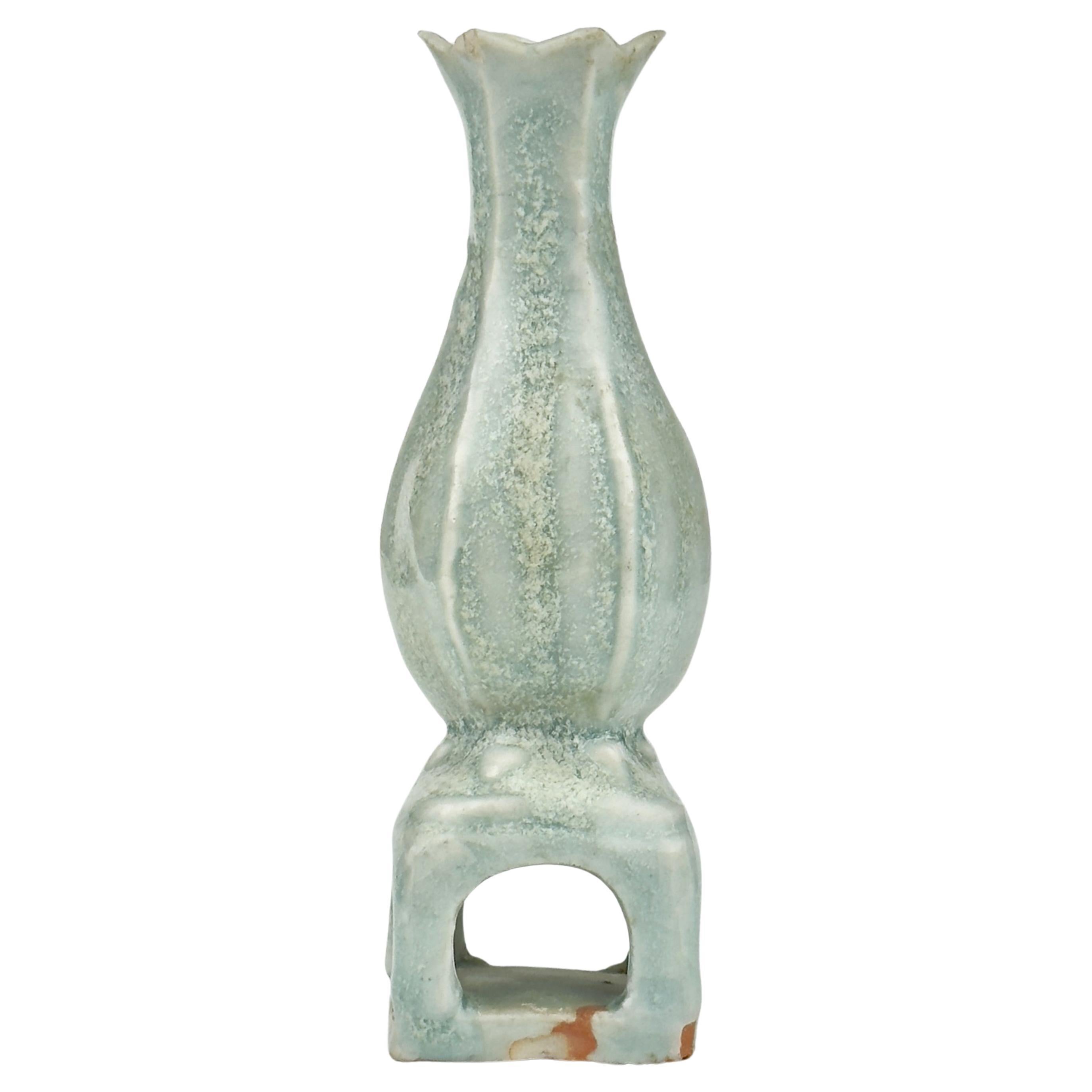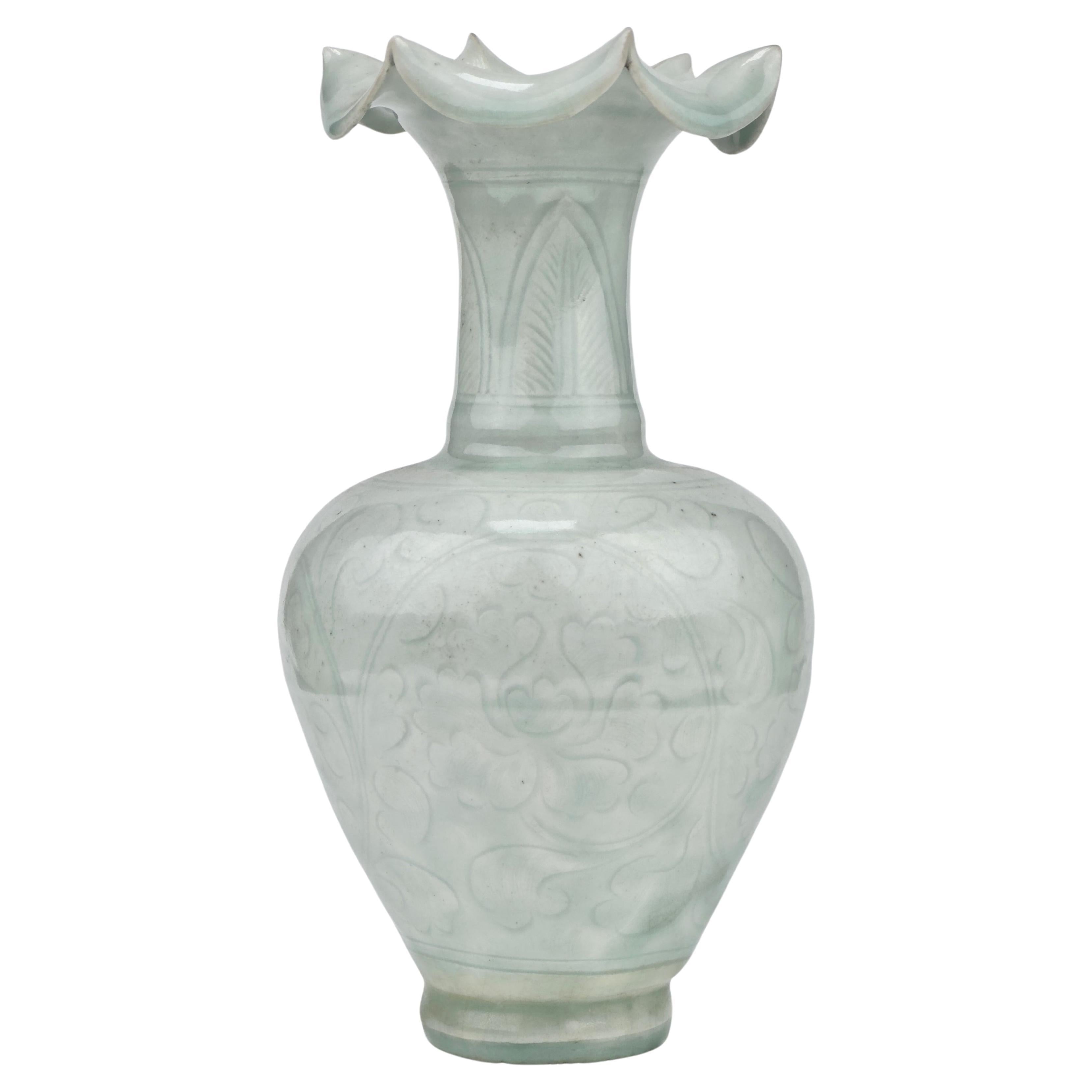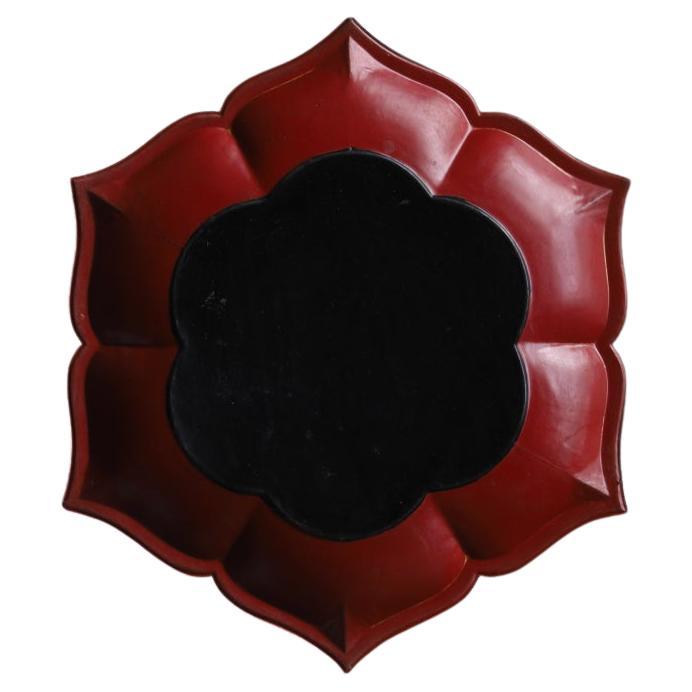Items Similar to Two white ware vases with flower design, Yuan Dynasty, 14th century
Want more images or videos?
Request additional images or videos from the seller
1 of 13
Two white ware vases with flower design, Yuan Dynasty, 14th century
About the Item
Porcelain with transparent pale-green (qingbai-type) glaze with flower, leaves and lotus design of typical yuan dynasty.
Period : Yuan Dynasty(1271-1368)
Type : Baluster vase
Medium : Qingbai Ware
Size : 15 cm(Height), 4.5cm(Mouth Diameter)
Provenance : Acquired in late 1990s, Hongkong
Reference :
1) Smithsonian National Museum of Asian Art - Accession Number F1984.18
2) Ashmolean Museum, Oxford - Accession no.LI1301.295
* Qingbai Ware
Qingbai ware, which translates to "blue-white ware," is a type of Chinese porcelain that was made at the Jingdezhen and other kilns in the porcelain-producing regions of China, primarily during the Song dynasty (960–1279) and continuing into the Yuan dynasty (1271–1368). It is known for its translucent quality and the pale blue-green glaze that characterizes most of its pieces.
The qingbai glaze was achieved using a small amount of iron in a reduction-fired atmosphere, which produced the subtle blue-green tint. The body of qingbai ware is typically made of a fine, white porcelain that is often referred to as 'artificial jade' due to its resemblance to the esteemed stone. The thinness of the body and the high firing temperatures used contributed to the translucent quality of the finished product.
Qingbai ware includes a range of items such as bowls, cups, vases, and ewers. The designs are usually simple and elegant, with an emphasis on the graceful lines and form of the objects. Decorative motifs, when present, are often incised, carved, or molded in relief and can include floral patterns, dragons, phoenixes, and other symbolic elements drawn from Chinese culture.
Over time, the technology and techniques used to produce qingbai ware evolved, leading to innovations in glaze and decoration that would influence later types of Chinese porcelain. Despite these changes, qingbai ware remains a distinguished example of the potters' art in Song and Yuan China, reflecting the refined aesthetic and cultural values of the period.
- Dimensions:Height: 5.91 in (15 cm)Diameter: 1.78 in (4.5 cm)
- Style:Ming (Of the Period)
- Materials and Techniques:
- Place of Origin:
- Period:
- Date of Manufacture:1271-1368
- Condition:Minor fading.
- Seller Location:seoul, KR
- Reference Number:1stDibs: LU9577239670592
About the Seller
New to 1stDibs
Joined in the past six months.
4.5
Vetted Seller
These experienced sellers undergo a comprehensive evaluation by our team of in-house experts.
Established in 1999
1stDibs seller since 2023
Typical response time: 1 hour
- ShippingRetrieving quote...Ships From: seoul, Korea South
- Return PolicyA return for this item may be initiated within 10 days of delivery.
More From This SellerView All
- White Ware with two dragons, Yuan Dynasty, 13-14th centuryLocated in seoul, KRThis vase is made from a type of low-fired, porous clay and features a crackled glaze. It bears resemblance to the renowned funerary vases and covers adorned with applied decorations...Category
Antique 15th Century and Earlier Chinese Chinese Export Antiquities
MaterialsCeramic, Porcelain
- A Carved Qingbai 'Chrysanthemum' Vase, Song-Yuan Dynasty(13-14th century)Located in seoul, KRThe ovoid body to a tall neck, the body decorated with a chrysanthemum meander, covered overall in a translucent pale blue glaze. Traces of excavation can be seen in the dirt marks o...Category
Antique 15th Century and Earlier Chinese Ming Antiquities
MaterialsCeramic, Porcelain
- Small Qingbai Pear-Shaped Vase, Song-Yuan Dynasty(13-14th century)Located in seoul, KRThis exquisite piece is a Qingbai ware from the Song to Yuan dynasty, and it appears to be an excavated artifact given its earthy encrustations, suggesting it has rested in the groun...Category
Antique 15th Century and Earlier Chinese Ming Antiquities
MaterialsCeramic, Porcelain
- A Carved White Ware 'peony' vase, Song-Yuan dynastyLocated in seoul, KRThe vase is raised on a slightly splayed foot and flanked on the tall cylindrical neck by a pair of mask handles. The body is molded with lotus scroll pattern between a floral scroll...Category
Antique 15th Century and Earlier Chinese Chinese Export Antiquities
MaterialsCeramic, Porcelain
- Qingbai ewer with slip decoration of two phoenix and lotus leaves, Yuan DynastyLocated in seoul, KRThis small ewer is an exquisite example of Qingbai ware, known for its pale blue-tinged glaze. The vessel showcases the advanced ceramic techniques and artistic sophistication of the...Category
Antique 15th Century and Earlier Chinese Ming Antiquities
MaterialsCeramic, Porcelain
- A Longquan Celadon-Glazed 'Dragon' Dish, Yuan DynastyLocated in seoul, KRThe dish is decorated to the centre with a moulded appliqué dragon chasing the flaming pearl surrounded by a carved stylised foliage band at the cavetto. The moulded fluted exterior ...Category
Antique 15th Century and Earlier Chinese Ming Antiquities
MaterialsCeladon
You May Also Like
- Vermillion Lacquer Rinka Tray/Chinese Antique/14th-17th century/Tea wareLocated in Kyoto-shi, KyotoThis product is a rare six-sided vermillion lacquer rinka (ring of flowers) tray. It was made in the late Yuan and early Ming dynasties. It has been ca...Category
Antique 15th Century and Earlier Chinese Antiquities
MaterialsWood
- Jin Dynasty Cizhou Ware Crouching Tiger Pottery Pillow, 12th-century, ChinaLocated in Brooklyn, NYChinese Jin Dynasty 12th Century Cizhou Ware Crouching Tiger Pottery Pillow .Tiger pillow, Jin dynasty, 12th century (circa 1150) The pillow is assembled ...Category
Antique 15th Century and Earlier Chinese Ming Antiquities
MaterialsCeramic
- Rare Chinese Buddhist Altar Table, Yuan Dynasty, 14th CenturyLocated in Prahran, VictoriaRare Chinese Buddhist altar table made from bai-mu cypress wood with an elaborate, deeply carved and pierced relief. It also features a floral apr...Category
Antique 15th Century and Earlier Chinese Other Furniture
MaterialsCypress
- Celadon Incense Burner with Peony Arabesque Design/Chinese Antique/14th-17th CLocated in Kyoto-shi, KyotoThis is a Celadon three-legged incense burner with peony arabesque design. Since the 14th century, Dwarf sedge was planted in this pot to decorate the tea room, so in Japan it is ...Category
Antique 15th Century and Earlier Antiquities
MaterialsCeramic
- Antique Shigaraki Jar "Uzukumaru"/Japanese Vase/14th-16th Century/Wabi-SabiLocated in Kyoto-shi, KyotoDuring the Muromachi Period (1392–1573), the concept of wabi-sabi was formed from the tea ceremony culture. Shigaraki ware was greatly influenced by the aesthetic sense of tea masters in the flow of the times. This product is a small jar called "UZUKUMARU", which was used by farmers as a pot to store seeds. The higaki pattern drawn on the body is unique to Shigaraki. It is said that it is modeled after a shimenawa rope or the bamboo fence...Category
Antique 15th Century and Earlier Japanese Antiquities
MaterialsCeramic
- Bottle Buncheong Ware / 15th Century / Korean Antiques / Joseon DynastyLocated in Kyoto-shi, KyotoPowder blue celadon ware is a type of porcelain made in Korea during the first half of the Joseon dynasty, mainly in the 15th century. It was made by applying a fine white slip over iron-rich clay, then covering it with a transparent glaze and firing it. It was mainly used for daily utensils such as bowls and bottles. Joseon ceramics...Category
Antique 15th Century and Earlier Korean Antiquities
MaterialsCeramic, Porcelain
Recently Viewed
View AllMore Ways To Browse
Vase With Flowers
Asian Influence Furniture
Antique Flower Design
Antique Vases With Flowers
Antique Vase With Flowers
Green With White Flowers
Kiln Used
14th Century Furniture
White Asian Vases
Asian Ware
China Ware
Green Ware
Antique Temperature
15th Century Iron
Antique China Ware
Asian Phoenix
Antique Furniture Oxford
Ming Flower





